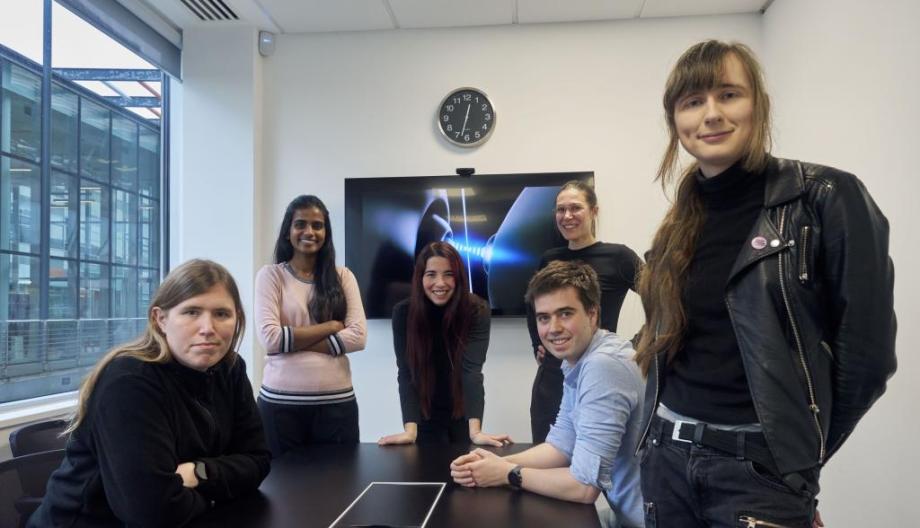Cambridge, UK and Los Angeles, USA, 27th January, 2025: In 2024, the quantum computing industry demonstrated for the first time that high-quality qubits can be created and successfully error-corrected. Announcements from Google, Quantinuum, QuEra and others proved that we now finally have the building blocks to build useful quantum computers. But the challenge of scaling remains.
This is a many orders-of-magnitude challenge. The Google Willow chip, demonstrating one error-corrected qubit[s], had ~100 physical qubits. Achieving the same level of performance on a chip containing 10k-1M physical qubits, as required to enable transformative applications, is something that would take many years since it is reliant on fundamental R&D.
The Quantum Error Correction (QEC) theory paper released today by Nu Quantum demonstrates how a modular quantum computing architecture of interconnected processors is compatible with high-rate and efficient quantum error correction codes, charting a path towards fault-tolerant distributed quantum computing.
This theory work has three significant implications:
- Distributed-QEC of modular quantum computing systems is possible
- The network requirements for an error-corrected distributed system are feasible
- Distributed-QEC is at least as efficient as other Monolithic QEC strategies
The transformative societal and economic benefits of quantum computing will only be unlocked with large-scale machines with tens of thousands to millions of physical qubits. These applications require fault-tolerant quantum computation, where error correcting codes are utilised to ensure reliable operation in the inevitable presence of hardware and environmental noise. It is likely that the quantum industry will need to embrace similar patterns to classical cloud and HPC industries to scale to fault tolerance, where large and resilient machines are built via modular scale-out.
The QEC theory paper released today by Nu Quantum represents a breakthrough in demonstrating how quantum error-correcting codes may be distributed across a modular quantum computing architecture in a scalable and efficient way.
- Distributed quantum error correction is possible
Our paper charts a path to construct logical qubits using physical qubits hosted in different processors interconnected via entanglement links. This means that the size of the error-correcting code, typically referred to as the ‘distance’ of the code, is no longer limited by the size of an individual processor.
- Building a fault-tolerant quantum computer via scale-out is feasible
Using standard simulation techniques to benchmark the performance of distributed QEC codes, our paper shows that the processor and network fidelity requirements for a distributed system are feasible. These calculations reveal that interconnects with 99.5% entanglement fidelity provide sufficient performance to build a fault tolerant machine – this hardware target is precisely what Nu Quantum’s technology is targeting. The same calculations yield a requirement of 99.99% for local 2Q fidelity inside each processor - a target that several qubit companies are close to demonstrating.
The distributed architecture presented features true modularity, in that the system scales by adding identical processors and network elements. Crucially, the overall system performance is achieved with sparse long-range connectivity, without needing every processor to be connected to every other processor. As the system scales in size, this connectivity requirement stays constant for a quantum memory.
Further, error rates improve as the system scales by adding more processors, enabling the realisation of a fault tolerant system of arbitrary scale.
- Distributed quantum computing is efficient
The flexible connectivity of the interconnected architecture enables the application of high-rate QEC codes, such as hyperbolic Floquet codes, underpinned by complex geometries, which offer higher efficiencies than the QEC surface code. This complements recent advances reducing the number of physical qubits required to construct each logical qubit.
Thus the paper charts a path to build a modular system architecture where many relatively small QPU cores (~100 qubits) are connected via a sparse network with realistic interconnect performance to efficiently create an arbitrarily large fault-tolerant machine. This work complements other recent breakthroughs in QEC, with Google’s Willow chip pushing the quality of logical qubits, QuEra and Quantinuum advancing the quantity of logical qubits in a single processor, and Nu Quantum now demonstrating a path towards distributed quantum error correction.
This important theory work both informs and underwrites Nu Quantum’s initiatives and capabilities to deliver efficient interfaces to leading qubit modalities via Qubit Photon Interface(s) and of scalable Quantum Networking Units capable of instantiating the complex entanglement graphs necessary for the implementation of Distributed-QEC codes described.
“Distributed quantum error correction based on hyperbolic Floquet codes” by Evan Sutcliffe, Bhargavi Jonnadula, Claire Le Gall, Alexandra E. Moylett, and Coral Westoby is available on arXiv: https://arxiv.org/abs/2501.14029
Image: Courtesy of Nu Quantum



